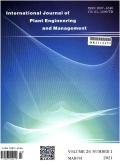Comparative Study of Helium Turbine Brayton Cycle and Supercritical CO2 Brayton Cycle for HTGR
International Journal of Plant Engineering and Management
Pub Date : 2018-07-22
DOI:10.1115/ICONE26-81561
引用次数: 0
Abstract
High-temperature Gas-cooled Reactor Pebble-bed Module (HTR-PM), which is designed by Tsinghua university of China, is under construction in Shidao Bay of China. It will be the world’s first pebble-bed type modular HTGR commercial demonstration plant. In HTR-PM project, steam-Rankine cycle has used in the power conversion system because it represents current state-of-the-art technology. Meanwhile, helium turbine for HTGR has been investigated for many years in Tsinghua University. Mock-up machine for HTR-10GT has been built. Helium turbine for 250MW HTGR, which is based on HTR-PM, has completed conceptual designed. However, supercritical carbon dioxide (S-CO2) Brayton cycle has shown to have great potentials for future HTGR technology in recent years because of its critical properties. Helium turbine cycle and S-CO2 Brayton cycle are both candidates for future HTGR. Therefore, comparative study is conducted in this paper. Comparison is focused on achievable efficiencies for each cycle mentioned above and on cycle layout with respect to simplicity and compactness, which primarily determines capital cost. Firstly, the physical model for helium turbine cycle with recuperator and intercooler is built and cycle performance is analyzed based on the parameters of HTR-PM. Then the model for S-CO2 Brayton cycle with recompression is also built and the cycle efficiency is analyzed with the same parameters of HTR-PM. Secondly, comparison between helium turbine cycle and S-CO2 Brayton cycle is made from the view of thermodynamics. Moreover, parameters optimization of both cycles based on HTR-PM is carried out. At last, advantage and drawback of both cycles are discussed from the engineering point. In conclusion, cycle simplicity and technology maturity of helium turbine cycle are better than S-CO2 Brayton cycle. But on the other side, smaller size equipment and less compression work of S-CO2 Brayton Cycle are more competitive than helium turbine cycle. Helium turbine with higher temperature and S-CO2 Brayton Cycle with higher pressure can achieve higher efficiency than steam Rankine cycle.HTGR氦轮机布雷顿循环与超临界CO2布雷顿循环的比较研究
由中国清华大学设计的高温气冷堆球床模块(HTR-PM)正在中国石岛湾建设中。这将是世界上第一个球床式模块化高温气冷堆商业示范工厂。在HTR-PM项目中,蒸汽-朗肯循环被用于动力转换系统,因为它代表了当前最先进的技术。同时,清华大学对高温气冷堆用氦涡轮进行了多年的研究。HTR-10GT的样机已经建成。基于HTR-PM技术的250MW HTGR氦气轮机已完成概念设计。然而,超临界二氧化碳(S-CO2)布雷顿循环由于其临界特性,近年来在未来的HTGR技术中显示出巨大的潜力。氦涡轮循环和S-CO2布雷顿循环都是未来HTGR的候选方案。因此,本文进行了比较研究。比较的重点是上述每个周期的可实现效率,以及周期布局的简单性和紧凑性,这主要决定了资本成本。首先,建立了带回热器和中冷器的氦涡轮循环物理模型,并基于HTR-PM参数对循环性能进行了分析。在此基础上,建立了S-CO2再压缩布雷顿循环模型,并以相同的HTR-PM参数对循环效率进行了分析。其次,从热力学的角度对氦涡轮循环和S-CO2布雷顿循环进行了比较。此外,还对两个循环进行了基于HTR-PM的参数优化。最后,从工程角度讨论了两种循环的优缺点。综上所述,氦涡轮循环的循环简便性和技术成熟度优于S-CO2布雷顿循环。但另一方面,S-CO2布雷顿循环的设备体积更小,压缩功更小,比氦轮机循环更具竞争力。温度较高的氦轮机和压力较高的S-CO2布雷顿循环比蒸汽朗肯循环效率更高。
本文章由计算机程序翻译,如有差异,请以英文原文为准。
求助全文
约1分钟内获得全文
求助全文

 求助内容:
求助内容: 应助结果提醒方式:
应助结果提醒方式:


